By TREVOR HOGG
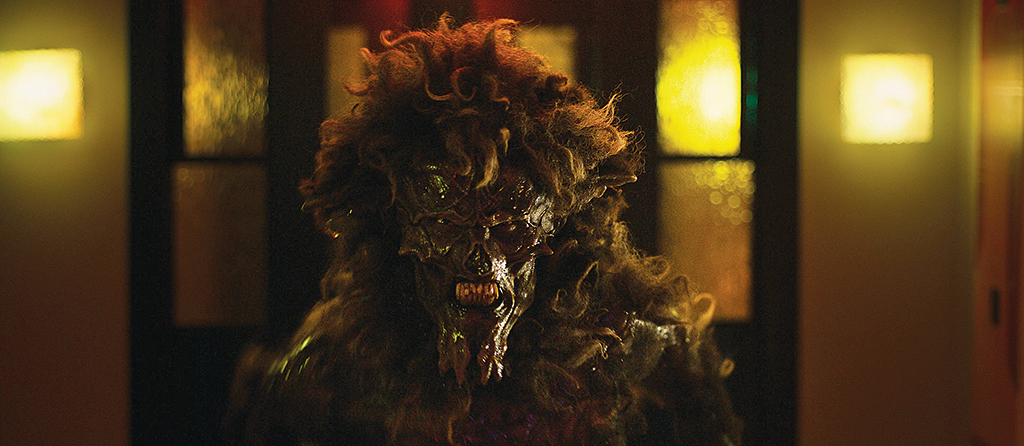
By TREVOR HOGG

There is never a dull moment working on the visual effects for the Primetime Emmy Awards-lauded Netflix science fiction anthology series Black Mirror. The series examines the dark side of technology and human nature – whether it be a mechanical dog-like creature, exploring space with the USS Callister or producing the standalone, interactive psychological thriller Black Mirror: Bandersnatch.
“DNEG did an amazing job with the robot in ‘Metalhead,’ which is definitely one of the best visual effects that I’ve worked on,” states Black Mirror VFX Producer Russell McLean, who was part of the team that received a BAFTA Award for Best Special, Visual and Graphic Effects for the episode that aired on December 29, 2017.

Producing Black Mirror: Bandersnatch was a unique and complicated task as viewers are given the ability to make narrative choices. “When I first started with Black Mirror on ‘The Waldo Moment’ as the animation producer, the Waldo character had to be in real-time because we couldn’t afford to do all of those as screen composites. We also needed to have interaction between Waldo and the cast. The budgets were smaller, but the ambition was still there. Visual effects started as something that was one of the last things to be discussed but in Season 3 it became a lot more central to the storytelling.”
Black Mirror Executive Producers Charlie Brooker and Annabel Jones never let the visual effects overshadow the storytelling. “They’re always focused on the narrative and making sure that it is clear and working,” notes McLean. “Visual effects have become a big part of telling those stories.”
Everything needs to be grounded in reality, McLean explains. “The temptation when you’ve got a CG character is to cheat with the camera. David Slade, who directed “Metalhead,” never wanted to have any shots that you couldn’t have if that was a real robot running in front of you. David shoots with a narrow depth of field as well, so we definitely wanted to make sure that was reflected in the focus pulls on the CG character. We were able to record the focus pulls, which allowed us to replicate them. [Capturing] that element of error where the focus is moving across the CG object helps it to feel natural.”
McLean says a common topic of conversation was the reliance on several visual effects vendors as opposed to a single one. “Each episode is trying to do something totally different, so you want to go where the people who have the right skills for that particular thing are. Also, there’s never enough time because the episodes are getting written quite quickly, and before the shoot things scale up.”
Post-production time varies with the episodes. “They’re all getting aired at the same time, so the last episode to shoot is always the nightmare one, which was ‘Black Museum’ for Season 4,” remarks McLean. “We shot ‘USS Callister’ first in Season 4 because that had all of the space effects. ‘Metalhead’ was the fifth one to shoot, so that was quite trying as we had two months from picture lock to finish the post.”
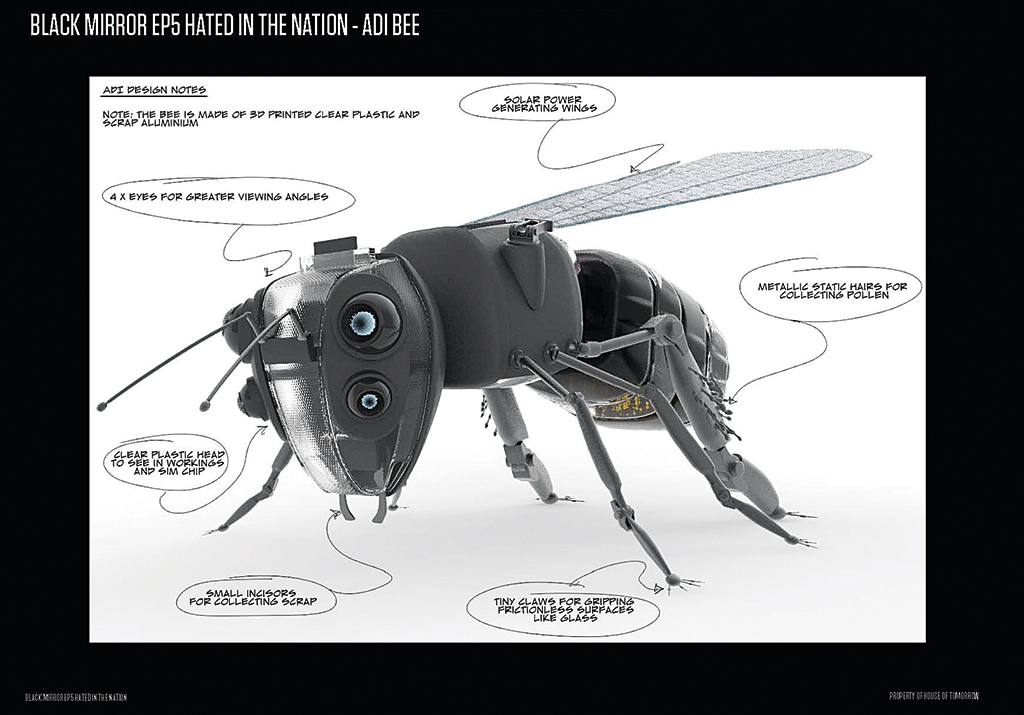
“The temptation when you’ve got a CG character is to cheat with the camera. David Slade, who directed ‘Metalhead,’ never wanted to have any shots that you couldn’t have if that was a real robot running in front of you. David shoots with a narrow depth of field as well, so we definitely wanted to make sure that was reflected in the focus pulls on the CG character. We were able to record the focus pulls, which allowed us to replicate them. [Capturing] that element of error where the focus is moving across the CG object helps it to feel natural.”
—Russell McLean, VFX Producer
Visual effects shots range from 150 to 600 depending on the needs of the episode. “Some things you know that you’re going to have to do, like the killer bees in ‘Hated in the Nation,’ so we can get going with those designs and concepts straightaway. After Charlie had written the first draft of ‘Playtest,’ I was told it was going to require a couple of digital matte paintings and a CG normal-sized spider. Then Dan Trachtenberg came on board as the director, and that expanded into a human spider creature, glitching rooms, and the gopher sequence. We were conceptualizing as quickly as we could for the spider creature and trying to figure it out as we were going.
“I started on Bandersnatch at the beginning of January 2018 and we delivered in the middle of October 2018, which is 10 and a half months,” he says. “Bandersnatch has 250 visual effects shots that appear in 750 different places. Everything with Bandersnatch became an admin problem and making sure that we were only delivering final shots to Technicolor, because if you have to update a shot that’s in 20 different places it becomes a nightmare. We managed to turnover some sequences quite early, like the mirror sequence, which took about three months. Part of the advantage of having an edit that’s built up of segments is that we could lock segments as we went, instead of waiting for the whole thing to be locked.”
Previs was only created for the mirror and jumping-off-the-balcony sequences. “The script was evolving, so there wasn’t time to do competitive bidding shots or speak to different companies,” remarks McLean. “We did it all with Duncan Malcolm, who is a visual effects supervisor at Glassworks. I’ve worked with him for years, and he has done quite a lot of sequences for Black Mirror. I wanted just one person to deal with and trust to do a good job, and come to a good agreement on price. I also needed someone who would not freak out when I said, ‘Okay that scene is gone. Now we’ve got this scene.’”
The mirror sequence came into the script quite late. “There were two mirrored sets, so David Slade had the freedom to put the camera anywhere. There are some shots where the back of my head is dressed in the same costume as Stefan Butler [Fionn Whitehead] while he’s taking the pills. For the crawl-through, two witness cameras were jammed-synced to shoot the reflection pass. Then we scanned Stefan and projected the reflection passes onto the geometry.”
With the story set in 1984, the video game technology had to reflect that time period. “Almost all of the ZX Spectrum games were pre-made ahead of time and in-camera,” reveals McLean. “Clayton McDermott, who has worked on Black Mirror since the beginning, did the graphics. He understands Charlie and pretty much at his first attempt was able to create the games of ‘Metalhead,’ ‘Bandersnatch’ and ‘Nosedive.’
“Based on Clayton’s design, we had someone else make the ‘Nosedive’ game that you can download if you get a certain sequence of things. At the end of the credits, Stefan is listening to a ZX Spectrum tape that you can record and play into an emulator. The ‘Nosedive’ game is actually quite good. After the post process, when I was speaking to the ZX Spectrum programmer about making the ‘Nosedive’ game, I asked him to make the ‘Metalhead’ and ‘Bandersnatch’ games as well. He gave ‘Metalhead’ a shot, but it’s hard to get all of that into 48K – 48K isn’t even a text email for us now.
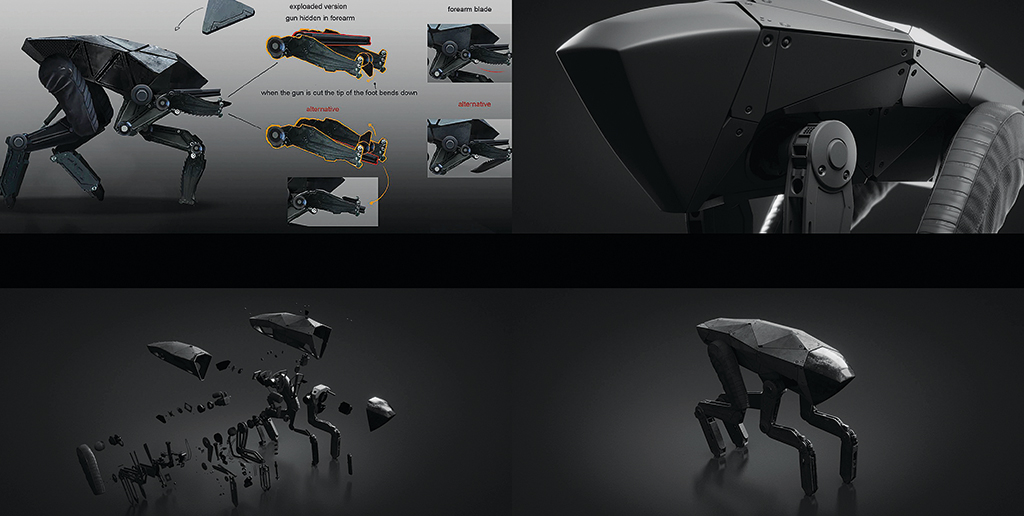
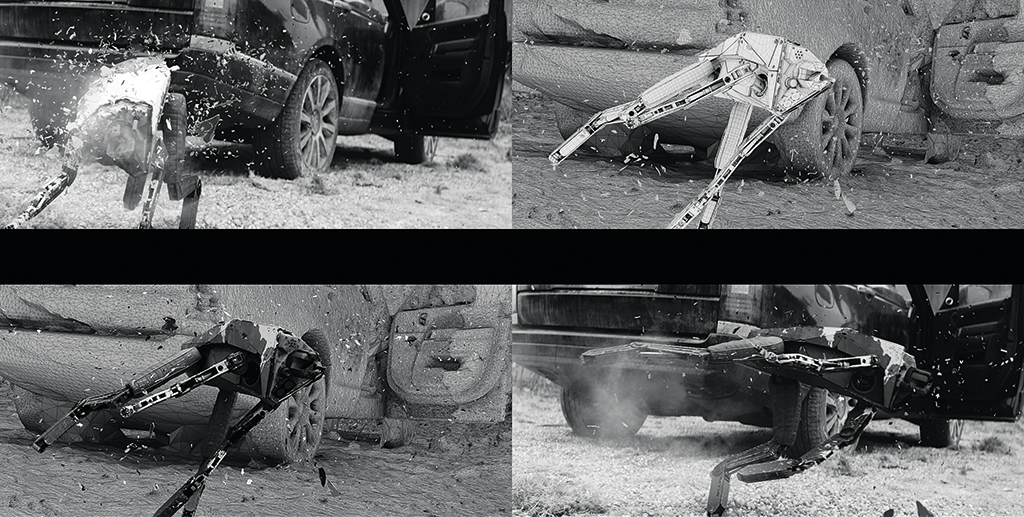
“There were two mirrored sets, so David Slade had the freedom to put the camera anywhere. There are some shots where the back of my head is dressed in the same costume as Stefan Butler [Fionn Whitehead] while he’s taking the pills. For the crawl-through, two witness cameras were jammed-synced to shoot the reflection pass. Then we scanned Stefan and projected the reflection passes onto the geometry.”
—Russell McLean, VFX Producer
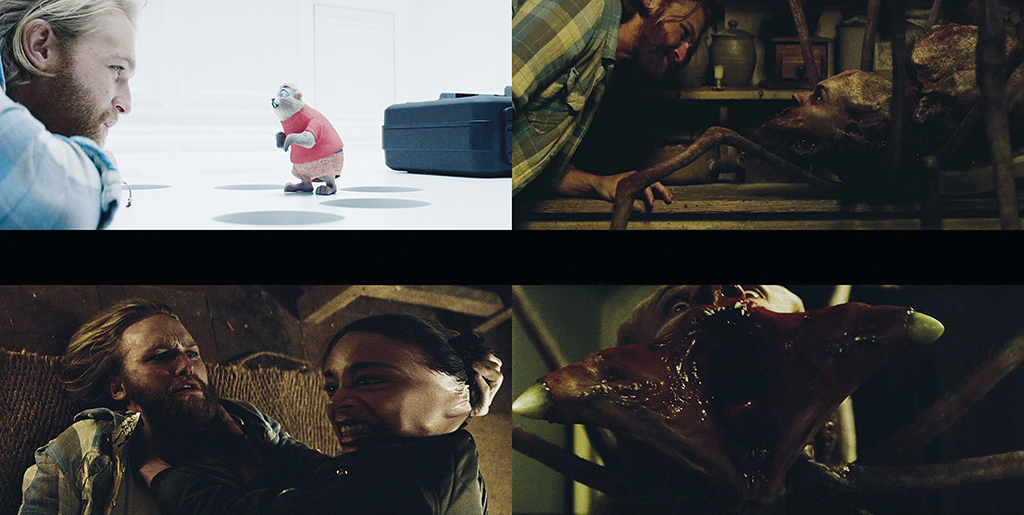
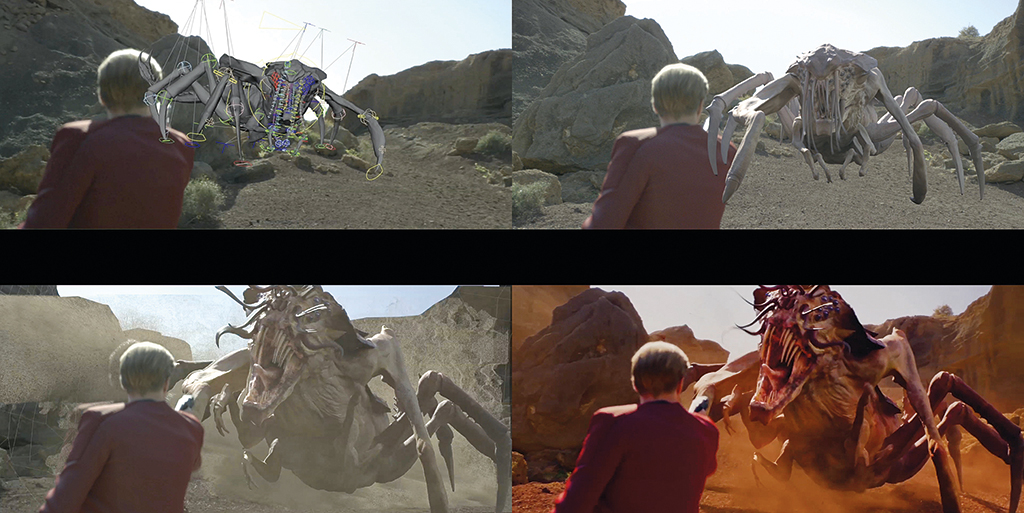

A demon known as the Pax makes an appearance in Bandersnatch. “There are no visual effects there,” states McLean. “Mark Coulier made the prosthetics for the Pax, and Kirstin Chalmers was the Makeup Designer. When you have someone in makeup for seven hours – for half an hour on set – it seems quite extravagant, but they’re important jump scares. I love the fight scene in the kitchen that takes place in the ‘Playtest’ episode, done by stunt coordinator Andy Bennett.
When the stuntwoman smashed into the dresser with all of the crockery, we all sat behind the monitor and thought that she had really hurt herself. Then she jumps up and says, ‘How’s that?’ It looked so real and was terrifying to watch.” Blood and gore are part of the visual language. “David Slade would say that you could never go too far with gore, as he’s always asking for more blood!” states McLean. “It’s a bit of a shame that the chopping up of the dad in the bath scene had to be shortened to make the rhythm of it work. There are no visual effects in that at all. The severed head is the actor in the dresser, so we had to paint out his shoulder. David is not keen on stuff like that as a prosthetic. He thinks you’ll never believe it.”
The year 1984 needed to be recreated in the production design. “There was a lot of bad taste in 1984,” observes McLean. “The suburban houses were horrible. The temptation is to go to the 1970s, which was a bit more attractive, and also Black Mirror has a design aesthetic that looks really good. We had to find the right locations that worked for us. The shopping center and WHSmith [British retail locations] were quite easy because that stuff is there.” The home that Stefan lives in was a hybrid of location and set. “We looked at 50 houses until we found Stefan’s house. It needed to be a suburban house, have interesting features, be middle class, and not look too fancy.” The only big CG environment for Bandersnatch was the ground beneath the tower in which Colin Ritman (Will Poulter) resides that required a 2.5D digital matte painting. “We shot on the 24th floor, and there was scaffolding up to the 18th floor, so there were clean-up and CG elements for when Stefan and Colin jump from the balcony.”
“As a producer, it felt like I was halfway between a software development project and a filmmaking process.”
—Russell McLean, VFX Producer
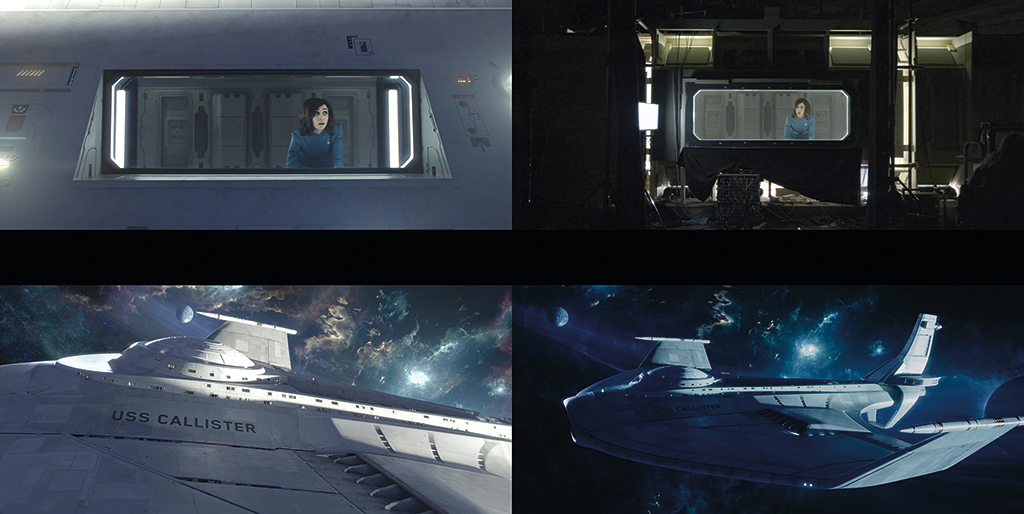
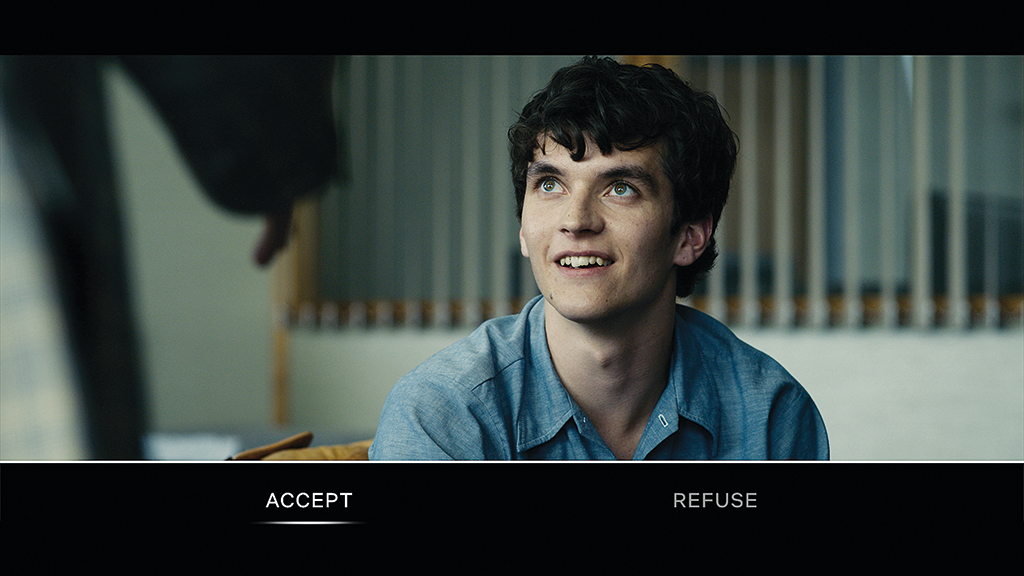
“I love the fight scene in the kitchen that takes place in the ‘Playtest’ episode, done by stunt coordinator Andy Bennett. When the stuntwoman smashed into the dresser with all of the crockery, we all sat behind the monitor and thought that she had really hurt herself. Then she jumps up and says, ‘How’s that?’ It looked so real and was terrifying to watch.”
—Russell McLean, VFX Producer
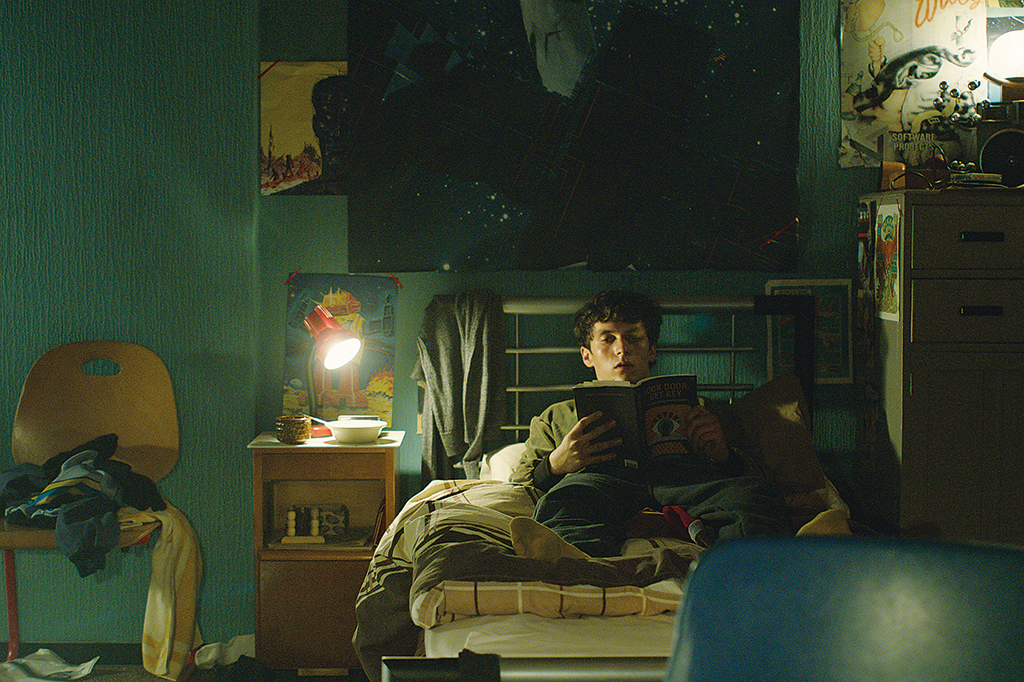
Two and a half hours of original material is in the final edit; however, the duplication of segments resulted in the delivery of five and a quarter hours-worth of material. “Our shooting script was 166 pages,” reveals McLean. “The scale of Bandersnatch involved a horrible number of spreadsheets! There were not two big visual effects sequences or one creature to do, but a lot of smaller and different visual effects. It was managing that across everything that was a tricky task.”
Netflix developed some new software for the project called Branch Manager, which allows for the writing of interactive stories. “We worked closely with the engineering team at Netflix to establish our parameters, how long we need to have between choices so there is no buffering, and how the choice points and scene tracking were going to work. There were weekly calls. We would come up with something and ask, ‘Are you able to do this or that?’ They never said, ‘No.’ Initially, we needed a minute between choice points to allow for buffering, and that ended up being 30 seconds as they improved on their end. As a producer, it felt like I was halfway between a software development project and a filmmaking process.”
Early decisions by the viewer impact the narrative later on. “The cereal choice in the beginning is mundane, but that’s the point of it,” states McLean. “Later on, that will affect what commercial will come up on the TV before he puts in the VHS. Whether people notice that, I don’t know. It was nice to have those kinds of things in there. The music choices affect what Stefan puts on in his bedroom later. Figuring out all of that stuff was interesting and good fun.”
A standout moment is when the viewer can choose whether the young Stefan accompanies his mother on the train. “You get the choice to be with your mum, but you’re going to die if you do! It’s very Black Mirror. It’s quite a warm moment.” McLean acknowledges that Bandersnatch has been the biggest challenge associated with producing Black Mirror. “It’s going to make doing a linear project feel easy!”